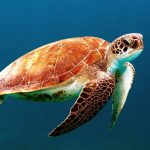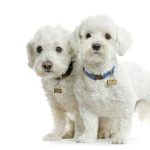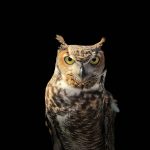The diet of a dog plays a paramount role in its overall health, and this is particularly true in the case of Siberian Huskies. This breed is well-known for its beautiful, thick coat and a diet that lacks essential nutrients may result in a lackluster coat. Therefore, a common question among Husky owners is whether a raw diet can improve their pets’ coat quality. In this article, we delve into the specifics of a raw diet, its potential benefits, drawbacks, and how it might influence the health and appearance of your Husky’s coat.
Understanding the Husky’s Dietary Needs
The Siberian Husky is a breed with unique dietary needs that have evolved from their origins in the harsh climates of Siberia, where they were bred to pull sleds over long distances. Their metabolism is naturally efficient, making use of every calorie consumed. Therefore, the quality of food that you feed your Husky is crucial.
A voir aussi : What’s the safest way to introduce a rescue Greyhound to a home with cats?
A well-balanced diet for a Husky should be high in protein. Protein is essential for maintaining their muscle mass and providing energy. Fats are also important for a Husky’s diet, as they supply a concentrated source of energy. Moreover, certain dietary fats contribute to a shiny, healthy coat.
The Basics of a Raw Diet
A raw diet, also known as Biologically Appropriate Raw Food (BARF) diet, typically comprises raw meat, organs, bones, fruits, vegetables, and sometimes dairy. Advocates of a raw diet argue that it is more aligned with dogs’ natural diet before domestication, thereby providing them with all the nutrients they need.
Sujet a lire : Why do Border Collies excel in sheepdog trials and how can you enhance their skills?
High-quality raw diets for dogs are typically rich in protein and fats. They also include a variety of fruits and vegetables which provide essential vitamins, minerals, and fiber. In theory, this is a diet that should suit the metabolic and dietary needs of a Husky.
Potential Benefits of a Raw Diet for a Husky’s Coat
The idea behind feeding your Husky a raw diet is to mimic the diet that its wild ancestors would have had. Those dogs would have had access to fresh, unprocessed food, which is thought to have led to healthier coats amongst other benefits.
Feeding your Husky a diet that is high in protein from raw meats and healthy fats can help promote a shiny, strong coat. This is because protein is crucial for hair growth, and certain fats, such as omega-3 and omega-6 fatty acids, help to nourish the skin and coat.
Moreover, many raw diets include organ meats, which are packed with nutrients like vitamin A, B vitamins, iron, and zinc. These nutrients can contribute to a healthy coat and skin.
Potential Drawbacks of a Raw Diet
While a raw diet can potentially improve your Husky’s coat and overall health, it’s important to approach this feeding method with caution.
For one, feeding a balanced raw diet can be quite complex. It’s not as simple as just feeding your dog raw meat. Dogs need a mix of meat, organ meat, bone, and other nutrients to get a balanced diet. It may take time and research to ensure you’re providing your Husky with all the nutrients it needs.
Moreover, raw diets have a higher risk of bacterial contamination. Raw meats can harbor bacteria such as Salmonella or E. coli, which can be harmful to both dogs and humans.
Lastly, feeding a raw diet can be more expensive than feeding dry or canned foods. High-quality meats and organ meats can cost considerably more than commercial dog foods.
Making the Choice for Your Husky
Every Husky is unique, and it’s important to remember that not all dogs will respond the same way to a raw diet. Some Huskies might thrive on a raw diet and exhibit a shinier, healthier coat, while others might not show much improvement or could even have adverse reactions.
Before transitioning your Husky to a raw diet, it’s best to consult with a vet or a canine nutritionist. They can guide you on how to introduce the diet safely and ensure your dog is getting a balanced intake of nutrients.
To sum up, a raw diet has the potential to improve your Husky’s coat quality. With careful planning and professional guidance, feeding a raw diet could benefit your Husky’s overall health and wellbeing. Remember, as a responsible pet owner, it’s your duty to ensure the dietary choice you make is in the best interest of your beloved canine companion.
Exploring the Difference between Raw Dog Food and Commercial Dog Food
Understanding the differences between raw dog food and commercial dog food is crucial if you’re considering a diet switch for your Siberian Husky. Commercial dog foods like kibble and canned foods are most commonly used because of their convenience. These foods are typically balanced to meet the nutritional needs of dogs; however, they may contain grains, fillers and artificial additives. These ingredients might not be harmful, but they don’t offer much nutritional value either.
On the other hand, a raw diet is typically grain-free and devoid of artificial ingredients. Instead, it primarily consists of raw meat, bones, organs along with fruits and vegetables. This diet is rich in nutrients, and it is believed to be similar to the diet of dogs’ wild ancestors, which theoretically makes it more natural and beneficial for dogs. The raw diet places a high emphasis on providing a high-quality source of protein and fat, both of which are necessary for Siberian Huskies.
Raw diets are usually more palatable to dogs than commercial foods. They can also lead to smaller, less smelly stools due to higher digestibility. However, they require careful planning to be nutritionally balanced and safe. The freshness and quality of the ingredients used in a raw diet are paramount to prevent bacterial contamination and nutrient degradation.
The Connection between a Husky’s Diet and its Coat Quality
The quality of a dog’s coat is a visible indicator of its overall health, and this is especially true in the case of Siberian Huskies. These dogs are celebrated for their thick, shiny coat which is a result of their genetics but can also be influenced by their diet.
Both the protein and fat content in a dog’s food can have direct effects on coat quality. High-quality proteins provide the building blocks for hair growth, while certain types of fats, particularly omega-3 and omega-6 fatty acids, contribute to a lustrous, silky coat.
In raw diets, these nutrients are typically present in abundance. Raw meats and organ meats are excellent sources of protein, while the fats in these foods, along with the potential inclusion of specific fat-rich foods like fish or certain seeds, can provide the necessary fatty acids.
Additionally, many raw diets include fruits and vegetables, which provide various vitamins and minerals. These micronutrients play vital roles in skin and coat health. For instance, vitamin A aids in cell growth, including the cells of the skin and hair, while zinc is involved in hair growth and repair.
Conclusion
The diet of a Siberian Husky significantly impacts its health, including the quality of its coat. While a raw diet has the potential to improve your Husky’s coat due to its high-quality protein, fat, and nutrient content, deciding to switch to a raw food diet should not be taken lightly.
This type of diet requires a sound understanding of canine nutrition to ensure it is balanced and safe. It also tends to be more expensive than commercial dog foods and comes with the risk of bacterial contamination. Therefore, it’s crucial to consult with a vet or canine nutritionist before making the switch.
In conclusion, the best dog food for your Husky is one that meets its unique nutritional needs, keeps its coat shiny and healthy, and aligns with your lifestyle and resources. Whether that is a commercial diet or a carefully planned raw diet, your Husky’s health and wellbeing should always be the priority.






